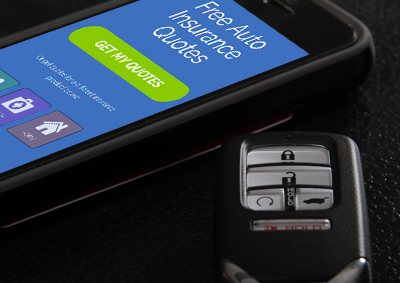How Much are Car Insurance Quotes for Low Income Drivers in West Virginia?

Comparing quotes for cost effective insurance is tough enough, and determining which insurers offer the cheapest auto insurance rates for low income drivers may require even more perseverance.
Each company has a unique formula to determine premium rates, so let’s rank the auto insurance companies with the most affordable rates in West Virginia. It’s a good idea to know that West Virginia auto insurance rates are influenced by many factors that control the cost of having a policy. This price fluctuation is why West Virginia drivers need to shop around with many companies when trying to find affordable car insurance rates for low income drivers. Insurance rates are influenced by many different factors and can change substantially, so the lowest-price company when you last compared rates may now be one of the more expensive options.
Find the Best Cheap Insurance in West Virginia
| Rank | Company | Cost Per Year |
|---|---|---|
| 1 | Erie | $940 |
| 2 | The Hartford | $1,029 |
| 3 | State Auto | $1,229 |
| 4 | Westfield | $1,275 |
| 5 | USAA | $1,287 |
| 6 | Progressive | $1,494 |
| 7 | Nationwide | $1,536 |
| 8 | State Farm | $1,538 |
| 9 | Encompass | $1,572 |
| 10 | GEICO | $1,744 |
| 11 | Motorists Mutual | $1,750 |
| 12 | Safeco | $1,803 |
| 13 | California Casualty | $1,806 |
| 14 | Allstate | $2,230 |
| 15 | Liberty Mutual | $3,275 |
| 16 | Sentry | $3,923 |
| Find Cheaper Rates Go | ||
Erie normally has some of the best car insurance rates in West Virginia at around $940 a year. The Hartford, State Auto, Westfield, and USAA also qualify as some of the best West Virginia auto insurance companies.
In the above example, if you currently have coverage with State Auto and switched to Erie, you might achieve an annual savings of in the vicinity of $289. Policyholders with Westfield might save as much as $335 a year, and USAA insureds might see rate reductions of $347 a year.
To compare your rates to other West Virginia insurance companies, click here to start your free quote or visit any of the companies below.
These policy rates are averages for all drivers and vehicles and are not factoring in a price discount for low income drivers. So the company that can offer you the best rate may not even be shown in the list above. That illustrates why you need to compare as many prices as possible using your own driver and vehicle profiles.
One of the key considerations that helps auto insurance companies calculate insurance cost is where you choose to live in West Virginia. Larger areas like Elkins, Princeton, and Dunbar tend to have higher auto insurance costs, whereas areas with fewer weather claims and lower vehicle theft rates receive better rates.
The illustration below illustrates the higher priced cities in West Virginia for low income drivers to purchase auto insurance in.
| Rank | City | Annual Premium |
|---|---|---|
| 1 | Elkins | $1,416 |
| 2 | Bluefield | $1,392 |
| 3 | Princeton | $1,384 |
| 4 | Cross Lanes | $1,367 |
| 5 | Dunbar | $1,364 |
| 6 | St. Albans | $1,363 |
| 7 | Huntington | $1,352 |
| 8 | Beckley | $1,350 |
| 9 | South Charleston | $1,350 |
| 10 | Oak Hill | $1,348 |
| 11 | Parkersburg | $1,342 |
| 12 | Charleston | $1,337 |
| 13 | Nitro | $1,325 |
| 14 | Pea Ridge | $1,322 |
| 15 | Fairmont | $1,302 |
| 16 | Teays Valley | $1,296 |
| 17 | Clarksburg | $1,284 |
| 18 | Vienna | $1,284 |
| 19 | Moundsville | $1,276 |
| 20 | Wheeling | $1,252 |
| Quote Best Rates Go | ||
Premium amounts are approximated as specific West Virginia zip code can alter rates noticeably.
Rate comparison of full coverage and liability-only
Finding cheap auto insurance for low income drivers in West Virginia should be important to most vehicle owners, and an easy way to lower the cost of insurance is to not buy full coverage. The example below compares car insurance rates when comparing full coverage to liability only. The rate quotes are based on a clean driving record, no claims, $500 deductibles, marital status is single, and no discounts are applied.
google.charts.setOnLoadCallback(drawFclqcibChart);function drawFclqcibChart() {var data = google.visualization.arrayToDataTable([[‘Age of Insured’, ‘Full Coverage with $500 Deductibles’, ‘Liability Only’],[‘Age 20’, 3961,1469],[‘Age 30’, 2049,805],[‘Age 40’, 2013,745],[‘Age 50’, 1839,697],[‘Age 60’, 1785,685],[‘Age 70’, 2203,917]]);var options = {title: ‘Full Coverage Compared to Liability Only’,titleTextStyle: {color: ‘#333’,fontSize: 17,bold: true},width: ‘100%’,height: 500,’chartArea’: {left:100,top:50,’width’: ‘100%’, ‘height’: ‘70%’},legend: {position: ‘bottom’},colors: [‘#6791b9′,’#98bee2’],hAxis: {title: ‘Annual Auto Insurance Cost for Average Vehicle in West Virginia’,minValue: 0,format: ‘$###,###’},vAxis: {title: ‘Age of Insured’}};var formatter = new google.visualization.NumberFormat({fractionDigits: 0,prefix: ‘$’});formatter.format(data,1);formatter.format(data,2);var chart = new google.visualization.BarChart(document.getElementById(‘qcibfcl’));chart.draw(data, options);}
Averaged for all ages 20 through 70, physical damage coverage on your policy costs $2,308 per year more than just buying liability insurance. That is a big expense that brings up the question when is it a good idea to stop buying full coverage. There is no definitive guideline of when to stop paying for comp and collision coverage, but there is a general school of thought. If the yearly cost of comp and collision coverage is about 10% or more of the vehicle’s replacement cost less your deductible, then you may want to consider only buying liability coverage.
For example, let’s assume your vehicle’s replacement value is $11,500 and you have $1,000 full coverage deductibles. If your vehicle is damaged in an accident, you would only receive $10,500 after you pay the deductible. If it’s costing in excess of $1,050 annually for your policy with full coverage, the it may be a good time to stop paying for full coverage.
The diagram below shows how choosing a deductible can influence yearly insurance costs when searching for cheap insurance for low income drivers. The prices are based on a single female driver, full coverage, and no discounts are applied.
google.charts.setOnLoadCallback(drawDfdqcibChart);function drawDfdqcibChart() {var data = google.visualization.arrayToDataTable([[‘Age of Insured’, ‘$100 Deductible’,’$250 Deductible’,’$500 Deductible’,’$1,000 Deductible’],[‘Age 20’, 2935,2701,2443,2199],[‘Age 30’, 2037,1865,1667,1479],[‘Age 40’, 1891,1735,1557,1387],[‘Age 50’, 1653,1519,1363,1213],[‘Age 60’, 1597,1465,1315,1173],[‘Age 70’, 1857,1709,1543,1387]]);var options = {title: ‘Impact of Deductible Levels on Insurance Cost in West Virginia’,titleTextStyle: {color: ‘#333’,fontSize: 17,bold: true},width: ‘100%’,height: 700,’chartArea’: {left:100,top:50,’width’: ‘100%’,’height’: ‘80%’},legend: {position: ‘bottom’,textStyle: {fontSize: 12}},bar: {groupWidth: ‘80%’},colors: [‘#6791b9′,’#75a8d8′,’#98bee2′,’#bad4ec’],hAxis: {title: ‘Annual Auto Insurance Cost for Average Vehicle’,minValue: 0,format: ‘$###,###’},vAxis: {title: ‘Age of Insured’}};var formatter = new google.visualization.NumberFormat({fractionDigits: 0,prefix: ‘$’});formatter.format(data,1);formatter.format(data,2);formatter.format(data,3);formatter.format(data,4);var chart = new google.visualization.BarChart(document.getElementById(‘qcibdfd’));chart.draw(data, options);}
In the chart above, a 50-year-old driver could cut expenses by $290 a year by switching from a $100 deductible to a $500 deductible, or save $440 by changing to a $1,000 deductible. Younger drivers, like the 20-year-old category, can save as much as $736 or more by choosing larger deductibles on their policy. When raising deductibles, it will be necessary to have plenty of discretionary funds to enable you to pay the extra out-of-pocket expense that comes with higher deductibles.
Which auto insurance company is best?
If you’re looking for the best auto insurance for poor drivers, some of the largest companies to start with are State Farm, Progressive, Geico, and Allstate. The next table points out pricing and service ratings, as well as optional policy coverages that you can purchase from each one.
| State Farm | Progressive | Geico | Allstate | |
|---|---|---|---|---|
| Overall Price | 2nd | 3rd | 1st | 4th |
| Customer Satisfaction | 4th | 3rd | 1st | 2nd |
| Claims Service | 2nd | 4th | 3rd | 1st |
| Discounts Offered | 3rd | 4th | 2nd | 1st |
| Percent of U.S. market | 18.3% | 8.8% | 11.4% | 10% |
| Recommend by customers | 88% | 88% | 87% | 86% |
| A.M. Best rating | A++ | A+ | A++ | A+ |
| Coverage for Uber and Lyft drivers | Yes | Yes | Yes | Yes |
| New car replacement coverage | No | No | No | Yes |
| Usage-based rating | Yes | Yes | No | Yes |
| Roadside service | Yes | Yes | Yes | Yes |
| Accident forgiveness | No | Yes | Yes | Yes |
| Mechnical breakdown | No | Yes | Yes | No |
| Available in West Virginia | Yes | Yes | Yes | Yes |
| Get Quotes Go | ||||
Who has the cheapest insurance quotes for poor drivers?
There are quite a few ways to compare auto insurance prices in West Virginia, but the most prevalent ways are from an exclusive agency such as Allstate or Liberty Mutual, an independent agent, or direct from companies such as Progressive or Geico. All three ways can provide auto insurance quotes, but it’s important to understand the differences in how they function.
Independent insurance agents write for multiple companies and can compare coverage rates with each one. Independent agents are not employed by one specific company and can give you a larger rate selection, which can give you a better comparison. If your agent finds a cheaper company, it’s easy for the agent to move the policy and you do not have to find a new agent.
Exclusive agencies are only able to quote your policy with one insurance company like Allstate or State Farm agents. These agents are not able to compare rates from other companies, so if rates are not competitive, they cannot give other choices.
The last way is buying direct, which means you skip an exlusive or independent agent and instead shop from a direct company like Esurance or Geico. Buying direct can be a good choice for families who have little risk and know how their policy works.
Which way is best for finding cheap auto insurance for low income drivers in West Virginia? It would be premature to say buying direct results in the cheapest rates since there is no need to pay agent commissions, but unfortunately, it’s not that simple. A valid argument could also be made that an independent agent guarantees the best prices because you have more choices, but that assumption is also not accurate. In a lot of cases, exclusive agents have extremely competitive rates that are impossible to beat.
Since auto insurance prices are based on many different factors, really the best method to make sure you’re not overpaying for auto insurance is to obtain price quotes and compare them. Put in the effort to get quotes from all three to give yourself the best selection. A great place to start is our list of online companies offering discounts: click here to view.

